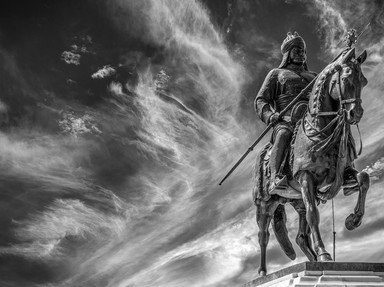Quiz Answer Key and Fun Facts
1. German anger about heavy reparations and loss of territory helped fuel Hitler's rise to power. What other event, that occurred between Armistice Day and the the Treaty of Versailles, also caused significant resentment among Germans?
2. Communism was regarded as a major threat during the postwar period, especially since Communists attempted to overthrow the governments of several countries. Which country, under Bela Kun in 1919, was the second one after Russia to establish a Communist government?
3. The Treaty of Versailles did not end the role of the American Expeditionary Force (AEF) in Europe. In which country did the AEF serve and suffer battlefield casualties after the Treaty of Versailles was signed?
4. The Winter War in 1939 was fought between which two nations, culminating in years of strife during the postwar period?
5. Italy felt it had been short-changed by the Treaty of Versailles when it failed to receive promised territory. It is well-known that it attacked Ethiopia to seek revenge an embarrassing earlier defeat. But which other nation did Italy extend its influence over in the post-war period?
6. The Spanish Civil War was a prelude to World War II. Volunteers from many other countries fought in what might be called a Nazi vs Communist proxy war. What was the name of the American volunteers for the Republican, or anti-fascist, side?
7. The presence of large numbers of ethnic and religious minorities in the newly drawn borders of countries after WWI led to strife. Turkey agreed to resettlement of about 1.5 million people with which country after a war that lasted from 1919 until 1922?
8. The United States experienced prosperity after World War I in its new role as a world power. Which of these also occurred in the USA during the postwar period?
9. After WWI many countries went to war to expand their borders, increasing nationalism and ethnic strife. Poland was involved in territorial battles after WWI. Which of the following answers is FALSE in the postwar era (before WWII started)?
10. The large number of deaths during World War I and the flu pandemic, along with deteriorating economic conditions and war weariness, started to weaken the European colonial system. Which of the following did NOT occur in African colonies as a result of WWI?
11. The Empire of the UK started to shrink after WWI with Home Rule being granted to Ireland and the loss of some colonial nations to independence. Which of these countries obtained its independence from the UK in 1922?
12. China was weak militarily at the end of World War I due to concessions to European powers and internal struggles, which continued throughout the postwar period. Japan took advantage of the Chinese weaknesses to invade which territory in 1931?
13. Japan benefited from the results of World War I before it embarked on a series of expansionist wars that were a precursor to World War II. Which of these events did NOT happen to Japan after World War I?
14. The 1920 Treaty of Sevres dismantled the Ottoman Empire. This led to a long period of instability in the region that was probably inevitable. Which of these events did NOT occur between the end of WWI and the start of WWII?
15. Later studies of World War I and the postwar period coined the phrase "The Surplus Two Million" for one of its effects. To what area of societal change does "The Surplus of Two Million" refer?
Source: Author
SixShutouts66
This quiz was reviewed by FunTrivia editor
ponycargirl before going online.
Any errors found in FunTrivia content are routinely corrected through our feedback system.
